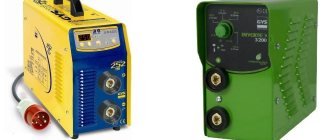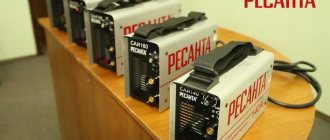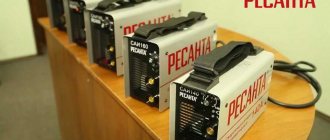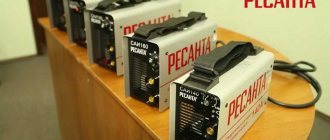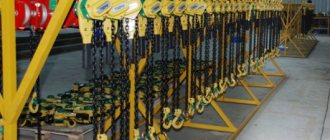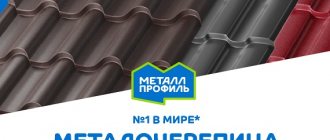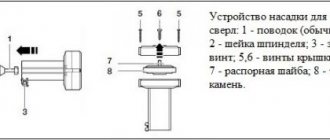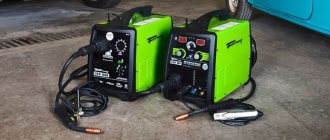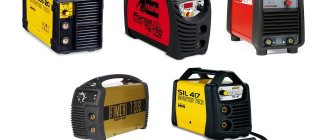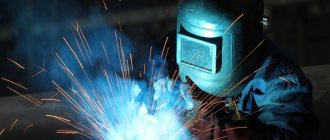A DC-DC converter or voltage inverter is a device that converts direct current of lower voltage into alternating current of higher voltage or vice versa. Such devices are variable voltage generators. It can be pulsed, pure or modified sinusoidal. Inverter converters are capable of acting as independent power sources and intermediate elements in the converter system.
Inverters contained in uninterruptible power supplies (UPS) provide a stable supply of electricity to computer equipment and other equipment. In the event of an unexpected power outage, they instantly supply computers with electricity from the backup battery. This makes it possible to save data and shut down the PC correctly.
Large UPS systems use powerful inverters with larger battery capacity. They can provide autonomous power to equipment for a long time, and when normal network power supply is restored, they switch the equipment to it.
Areas of application
Inverters are used in various situations:
- On long trips, they provide the ability to connect the necessary devices (refrigerator, electrical tools, etc.) to the car battery.
- Conversion of energy obtained from alternative sources (for example, from solar panels).
- Backup power supply to your home in case of an unexpected power outage.
- Source of energy in suburban areas in the absence of centralized electrification, etc.
To perform each of these tasks, select the appropriate converter models. Most often, 12/220 inverters are used by motorists.
Devices with 12 V and 24 V input voltages are not interchangeable!
How to choose a 220 V welding machine for home and garden
When selecting welding equipment, the consumer must decide what tasks it will be needed for.
If it is used for repairing body parts, then it should have some parameters, and if it is used for the production of metal structures, then it should have different parameters. But in any case, the devices must meet a number of requirements, in particular, functions such as hot start, anti-sticking and some others must be implemented in a home device. This is how inverters differ from traditional devices.
A fan must be installed in the design of this type of device. In addition, the circuit must be protected from power surges. In principle, a device with such parameters can work both in a home workshop and in industrial production conditions.
Classification
The main classification criteria for these devices are power, current shape and input voltage. The choice of a specific model depends on the purposes for which the device is purchased.
To connect to a car cigarette lighter, the simplest compact converters of low power are used. Gadgets with low power consumption (phones, laptops, fans, flashlights) can be powered from them.
The power of the inverter connected to the cigarette lighter should not exceed 150 W. Otherwise, you can damage the entire electrical wiring of the car.
Converters for powering devices with a power of 150 W or more are connected directly to the battery terminals. To reduce efficiency losses, it is not recommended to use “crocodiles”, which are included in some models. For a stable and reliable connection, copper terminals with a screw connection are more suitable.
Rated and peak power
When choosing a converter, you should sum up the power of all consumers that will be connected to it. Another 20% is added to the result obtained, since the device will not be able to operate at its maximum capabilities for a long time. In addition, losses are possible due to poor contact in connections or poor cable quality. You also need to consider the battery capacity.
It is necessary to calculate the power of the inverter according to two characteristics: nominal and peak. The first of them determines the load under which the device can operate for a long time. For household models, it usually ranges from 60 to 1000 W. However, there are modifications in which this figure exceeds 1 kW. With their help, you can set up a mobile mini-power station. It is advisable to buy them, for example, to connect power tools.
Peak power characterizes the maximum load that the inverter can withstand for a short period of time. It varies between 150 - 10000 W. The current consumed by some electrical appliances when starting up is several times higher than the rated value. When choosing a converter, you must pay attention to this point, otherwise the equipment connected to it may not start.
Expert opinion
Kuznetsov Vasily Stepanovich
If the device is used while the car engine is running, its load current should not be higher than the current generated by the generator.
For domestic needs (for example, traveling by car), an inverter with a power of up to 600 W is usually sufficient. This is enough to turn on the refrigerator, charge your phone, laptop or flashlight. The load current of such a device is approximately 50 A, which is significantly less than that of modern automobile generators.
Current form
An important criterion for choosing a converter is the shape of the current obtained at the output. This parameter determines which devices can be connected to it.
There are two types of form:
- Pure (continuous) sine wave . The current diagram is a smooth sinusoid. Such devices ensure safe connection of any equipment. The circuitry of these devices includes expensive components, so the price for them is quite high.
- Modified (changed) sinusoid . The current diagram is stepped. Such inverters cannot be used to connect power tools with asynchronous motors, compressors and devices susceptible to interference. The equipment will either not start at all or will operate in extreme mode, which leads to a decrease in efficiency and a shortened service life. Converters with a modified sine wave are suitable for powering lamps, heaters, brushed motors, telephones, laptops, and televisions. The quality of work can be improved by additionally installing a soft starter.
The cost of pure sine wave inverters is quite high. It is advisable to purchase them only if you need to connect equipment that is incompatible with the modified sine wave.
History of the appearance of the converter
In the late 1800s, American pioneer electrician Thomas Edison (1847−1931) left his laboratory to demonstrate that direct current (DC) was a better way of delivering electricity than alternating current (AC), which was the new system supported his Serbian rival Nikola Tesla (1856−1943). Edison tried all sorts of clever ways to convince people that AC was too dangerous, from electrocleaning an elephant to advocating the use of AC in the electric chair to control capital punishment. Regardless, Tesla's system won the day, and the world has been running pretty much on the grid ever since.
The only problem is that while many of our appliances are designed to operate with alternating current, low-power generators often produce direct current. This means that if you want to run something like an AC powered gadget from a DC battery in a mobile home, you will need a device that converts the DC to an AC inverter, as it is called.
Protection
Inverters are equipped with various types of protection, which, when critical values are reached, turn off the device or sound an alarm in the following situations:
- Input voltage is too high or too low.
- Short circuit.
- Overheat.
- Exceeding the permissible load.
- Incorrect connection.
The higher the cost of the device, the more attention is paid to protective measures.
What is the current waveform of your electric inverter?
PureModified
Technical capabilities of inverter devices
Any inverter, being a welding machine, serves to ignite the welding arc and maintain its combustion in a stable state. Due to the features of its design, the inverter device copes with this task perfectly. In addition to the main function, modern inverter models are equipped with a number of additional options that make their use as convenient and comfortable as possible. These include:
- “Hot start” (this option allows you to ignite the welding arc faster, which is achieved by applying an additional electrical pulse to the electrode);
- “Arc force” (this function assumes that when the electrode suddenly approaches the surface of the parts being welded, the welding current automatically increases, which prevents the electrode from sticking in such a situation);
- “Anti-sticking” (this option works as follows: when the electrode sticks, the electric current stops flowing to it; it starts flowing only when the electrode is torn off from the surface of the parts being connected).
Front panel of the welding inverter "BIMark-170"
Some models of inverter devices are also equipped with overheating indicators and an automatic shutdown option if overheating does occur. This useful function protects such an expensive device as an inverter from burning out and, as a result, from costly repairs.
The additional options described above are especially useful for novice welders, as they help minimize the impact of a specialist’s skill level on the quality of welding.
Exits
Converters can be equipped with various types of outputs for connecting consumers:
- Electrical socket (regular, European standard or universal).
- USB connector.
- Special DC connectors with voltage from 12 to 28 V (car equipment is connected to them: radios, TVs, heated seats, etc.).
The number of outputs of each type depends on the specific model.
Types of electricity
Most teachers who provide students with information about electricity talk primarily about direct current (DC).
It is a stream of electrons that follow each other at a certain distance. The most popular analogy from experienced teachers is the comparison of a stream with ants walking in a column and carrying ordinary dry leaves. This idea is quite general, but the basic idea is correct. The circuit resembles a continuous electrical loop that powers a regular flashlight. However, electricity works differently in larger appliances. Wall-mounted outlets provide an alternating current (AC) power source to appliances. In it, electricity switches at a high speed of 50-60 times per second, that is, the frequency of such switchings is 50-60 Hz.
It is not entirely clear to an ordinary person who does not have knowledge in the field of electronics how such a current powers devices if it constantly changes the direction of its movement. However, the answer to this question is simple. For example, you can take a regular wall lamp that runs on AC power. When you plug it into a power outlet, the electrons begin to actively move, change places and change the direction of movement. The whole process happens very quickly, so heat is generated in the wires.
It is this heat that will pass into the lamp, causing it to glow. Alternating current powers devices just as efficiently as direct current, but the electrons in it move in place.
Material
Different materials can be used to make the converter housing:
- Aluminum.
- Steel.
- Plastic.
There are also combined options (aluminum with plastic and steel with plastic).
The aluminum case provides passive cooling better than others. Steel products have increased strength. The plastic version is only suitable for low-power inverters.
Expert opinion
Kuznetsov Vasily Stepanovich
Regardless of the housing material and type of cooling, the inverter should only be installed in an open space to ensure unimpeded heat dissipation.
Technical characteristics of inverter devices
When choosing an inverter, they are primarily guided not by its cost, but by its technical characteristics. Whether you can use such a device to perform the work for which it was purchased depends on how correctly they are selected.
The most important characteristic of any welding machine (and the inverter is no exception) is the current strength that such equipment allows to obtain. This parameter affects the thickness of the part you can weld using an inverter device. There is no point in overpaying for a powerful machine if you plan to use it only for welding thin parts made of ferrous metal.
Dependence of welding current and electrodes used on metal thickness
An important parameter is not only the maximum value of the welding current, but also its minimum value. Welding of thin sheet metal is performed at minimum current. It is also necessary to take into account how the welding current is regulated - in a stepwise or smooth pattern. Adjusting the current according to a smooth scheme is naturally more convenient.
The ease of ignition of the welding arc has a key influence on a parameter such as open circuit voltage. The higher it is, the easier it will be to ignite the arc.
The type of electrical current that powers the inverter device is another parameter that must be taken into account. On the modern market there are inverters that can operate from an electrical network with a voltage of 220 and 380 V. Naturally, for domestic use it is more advisable to choose equipment that operates from a network with a voltage of 220 V.
Price
The most significant impact on the cost of the converter is its power.
There are three main price segments:
- Initial . This includes low-power devices (up to 200 W) for powering small appliances. Plugs into the cigarette lighter. They produce a modified sine wave. Cost – up to 1400 rubles.
- Average . Inverters with a power of up to 800 W with a modified sine wave. Connects directly to the battery. Cost – 1400 – 5000 rubles.
- Supreme . Powerful devices (up to 5 kW) with modified or pure sine wave. Cost – from 5000 rub.
Inverter operating modes
| Operating mode | Its features |
| Launcher | The power can be 2 times the rated value of the inverter converter for a split second. Acceptable for most devices. |
| Long lasting | Power consumption corresponds to the rated value of the inverter. |
| Overload mode | Power consumption is 1.3 times higher than the nominal value. On average, inverter converters are capable of operating in overload mode for about half an hour. |
Popular models
Of the variety of inverters, consumers prefer the following models:
STURM AW98A03
The rated power of the device is 240 W. Shutdown occurs when the load exceeds 360 W (30 A). Equipped with a durable housing and protection against overheating, overvoltage and short circuit. Easy to use, controlled with one button. Produces a modified sine wave. Cost – about 2500 rubles.
MAP "ENERGY" 900
Power – 900 W (shutdown occurs when reaching 1300 W). Equipped with a digital display and a wide range of different settings and functions. Can be used as a charger for a car battery. Average cost – 28,000 rubles.
TBS POWERSINE PS600-12
A device with a remote control, active cooling and high efficiency (92%). The body is made of steel. Load – up to 500 W. Pure sine wave. Protection against too high and too low input voltage. Cost – about 26,000 rubles.
MEANWELL 12/220V 1500W
Can be powered by a cigarette lighter, battery or solar panels. It features high power and small dimensions. Costs about 7,000 rubles. Produces a pure sine wave.
RITMIX RPI-6010 CHARGER
Combines the functions of a rectifier, a charger for a car battery and an autonomous power source. Costs about 5000 rubles.
MOBILEN SP-150
Power – 150 W. The output is equipped with a USB connector and a regular socket. There is overload protection. Plugs into the cigarette lighter. Cost – about 1000 rubles.
LUXEON IPS-2000S
Power – up to 1 kW. Pure sine wave. High level of protection. Efficiency – 90%. Maintainability. Cost – from 8000 rub.
STIHL PS12/300
Power – 300 W. Pure sine wave. Connects to battery or cigarette lighter. Average cost – 7500 rubles.
General information about the device
Nikola Tesla's greatest discovery is used by humanity everywhere today. Most appliances in every home are designed to run on DC power, but outlets supply AC power. This is why you almost always need a special device or rectifier that will convert AC to DC.
The inverter performs a completely opposite function. You can consider its work using the example of a regular flashlight. The device is small and is powered by a built-in battery, which becomes a direct current source. If you remove it from the device, turn it over with the other pole and install it again, there will be no noticeable difference in operation or quality of lighting. However, electricity will flow differently.
This process can be compared to a mechanical converter, where human hands turn the battery at a speed of 50-60 times per second. Of course, devices that can be purchased in specialized stores work somewhat differently. Magnetic switches are used to constantly change the direction of electron flow. However, this design is only for mechanical devices.
Electronic inverters change direction smoothly, eliminating sudden voltage changes. The second type is considered a more preferable option, since constant voltage surges negatively affect the functioning of some electrical appliances. The design of such inverters is equipped with special inductors and capacitors. These parts soften the flow of energy at the input and output, thereby creating a smooth power source for electrical appliances.
In some cases, inverters are used for transformers to convert an AC source to a higher or lower frequency depending on the needs of a particular consumer. It is worth noting that the output power is always less than the input power. This is necessary for the normal functioning of the devices. Any transformer or inverter cannot supply more energy than it consumes, since some of it is wasted.
